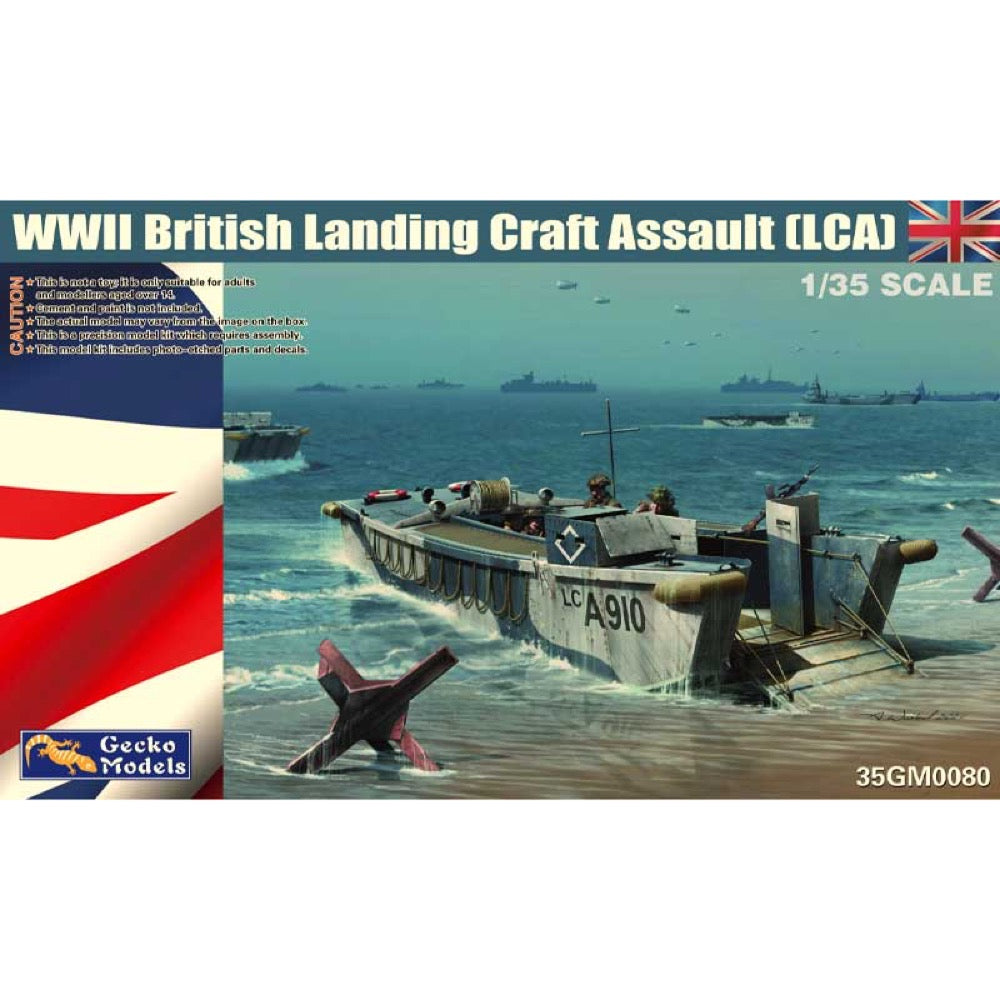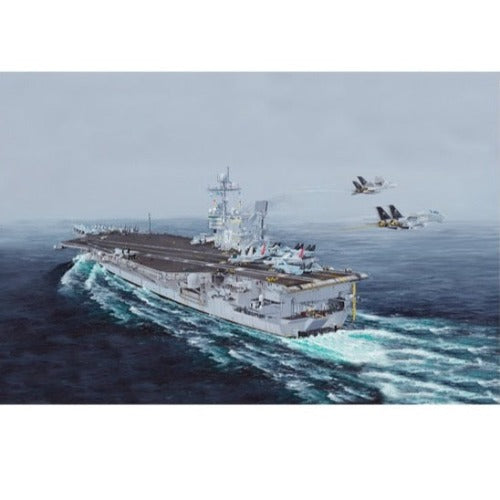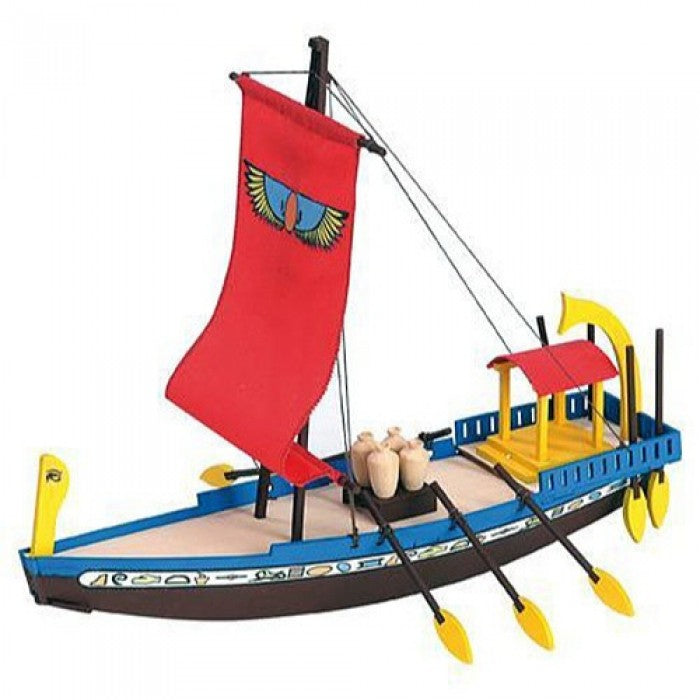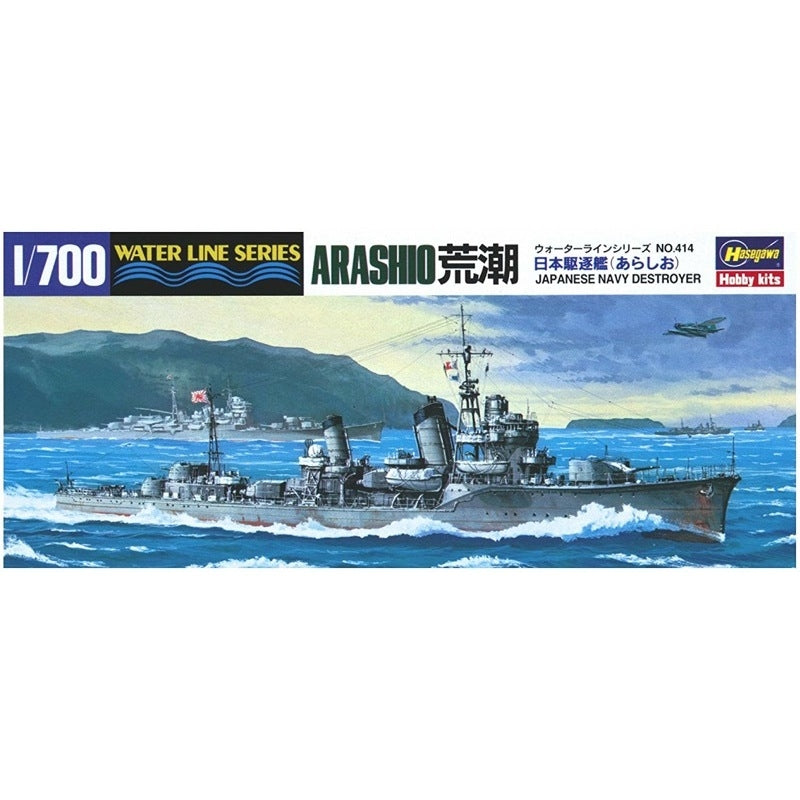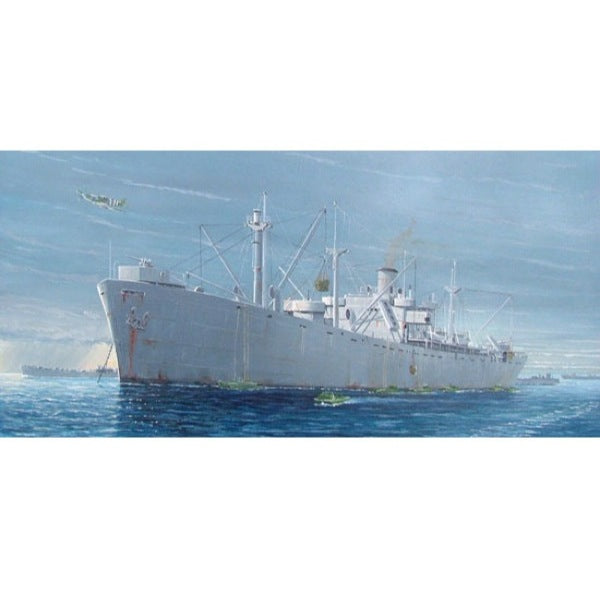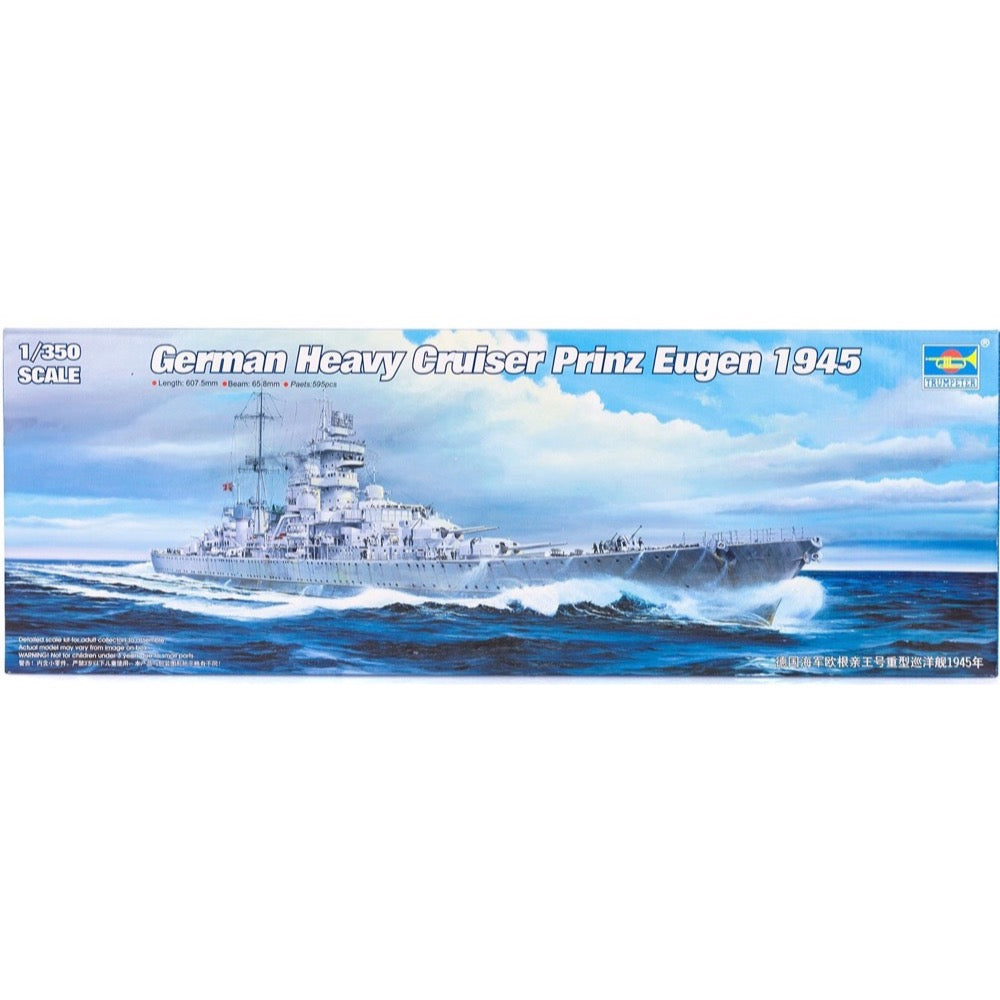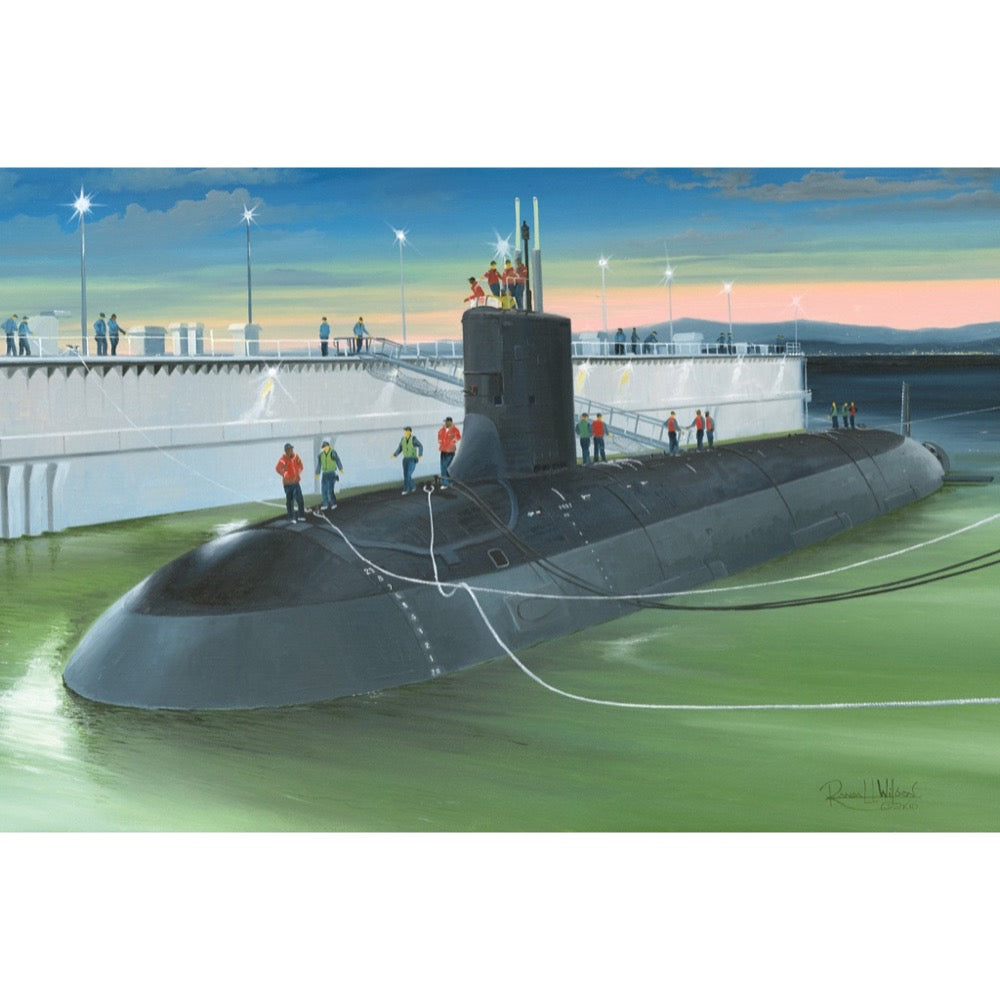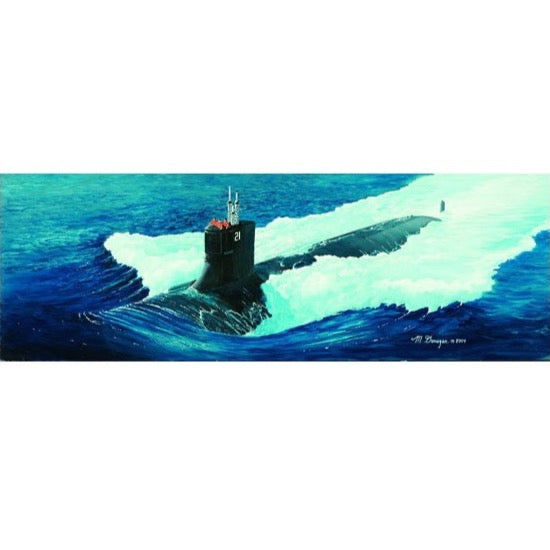
Trumpeter 05904 1/144 USS Seawolf Attack Submarine SSN-21
21.00
$
<p>The Seawolf was conceived as a faster, better-armed eventual replacement for the Los Angeles class nuclear-powered attack submarines. The first of class, the Seawolf (SSN21), was ordered from the Electric Boat Division of General Dynamics, Connecticut, in January 1989 and commissioned in July 1997. Connecticut (SSN22) was commissioned in December 1998. The third, Jimmy Carter (SSN 23), is to be modified to improve payload carrying and underwater maneuverability. Advanced weaponry and new tactical capability and communications combined with an increased weapons load of Mark 48 anti-submarine torpedoes, Harpoon missiles and Tomahawk cruise missiles, Which allow Seawolf to operate from under arctic ice to shallow water close to shore. The Seawolf was a product of the Cold War, conceived to maintain the USA acoustic advantage over Soviet submarines. With the end of the Cold War and the change of emphasis to littoral operations, the cost of the Seawolf submarines was judged prohibitive and the programme was curtailed in favour of the smaller and cheaper Virginia Class New Attack submarines.</p>
<h3>Specification</h3>
<ul>
<li>Model Dimension: L: 747mm W: 126mm H:169mm</li>
<li>Total Parts: 45pcs</li>
<li>Total Sprues: 3pcs sprues plus the half hull</li>
<li>Paint Schemes: SSN-21 Seawolf</li>
</ul>
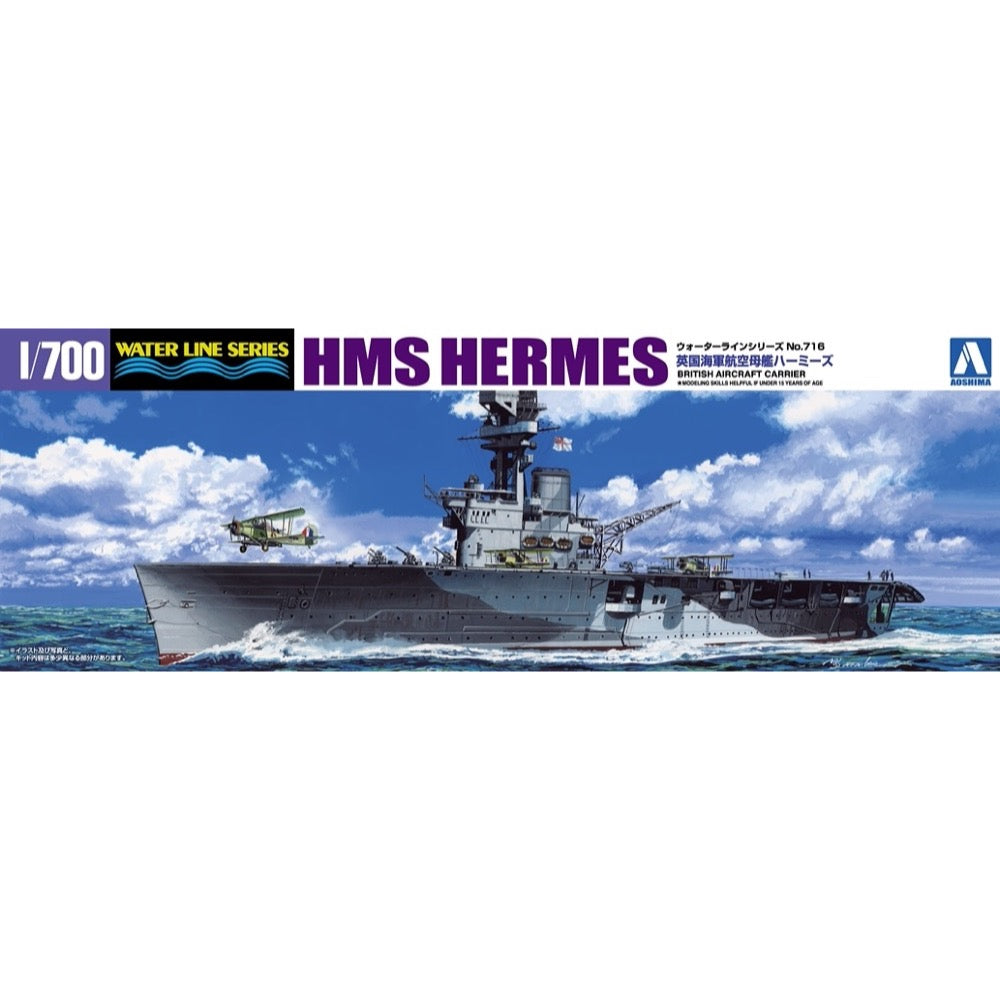
Aoshima A005103 1/700 British Aircraft Carrier HMS Hermes Battle of Ceylon Sea
25.00
$
<p>Aoshima brings us another boxing of their wonderfully detailed HMS Hermes kit in 1/700th scale! The HMS Hermes holds the distinction of being the first ship to be designed from the keel up to be an aircraft carrier. This kit depicts her as she appeared before being sunk in the Indian Ocean.</p>
<p>Experience the legacy of naval history with the Aoshima 05103 British Aircraft Carrier HMS Hermes Battle of Ceylon 1:700 Model Kit. This exquisite model kit pays homage to the illustrious HMS Hermes, renowned for its pivotal role in the Battle of Ceylon during World War II.</p>
<h3>Includes</h3>
<ul>
<li>Precision-cut plastic parts to accurately recreate the HMS Hermes.</li>
<li>Decals and stickers for authentic detailing.</li>
<li>Detailed assembly instructions.</li>
</ul>
<h3>Features</h3>
<ul>
<li>Scale and Precision: This 1:700 scale model is meticulously crafted to ensure accuracy and attention to detail, providing a true-to-life representation of the historic aircraft carrier.</li>
<li>Historical Significance: The HMS Hermes holds a distinguished place in naval history as the world’s first purpose-built aircraft carrier. Relive the epic Battle of Ceylon where HMS Hermes demonstrated its strategic prowess.</li>
<li>High-Quality Components: Aoshima ensures that each component of this model kit is made from high-quality materials, providing durability and a premium finish.</li>
<li>Detailed Instructions: Comprehensive, easy-to-follow instructions make assembly straightforward, even for novice model builders.</li>
<li>Display-Worthy: Once assembled, this model stands as a testament to your craftsmanship and a centerpiece for any collection, making it perfect for display.</li>
<li>Ideal For:<br>
<ul>
<li>History enthusiasts looking to delve into the naval battles of World War II.</li>
<li>Model building hobbyists seeking a challenging and rewarding project.</li>
<li>Collectors aiming to add a historically significant piece to their collection.</li>
<li>Embark on a journey through history and naval engineering with the Aoshima HMS Hermes Model Kit.</li>
</ul>
</li>
<li>All parts come molded in grey plastic.</li>
</ul>
<p>This is an injection-plastic ship model kit.</p>
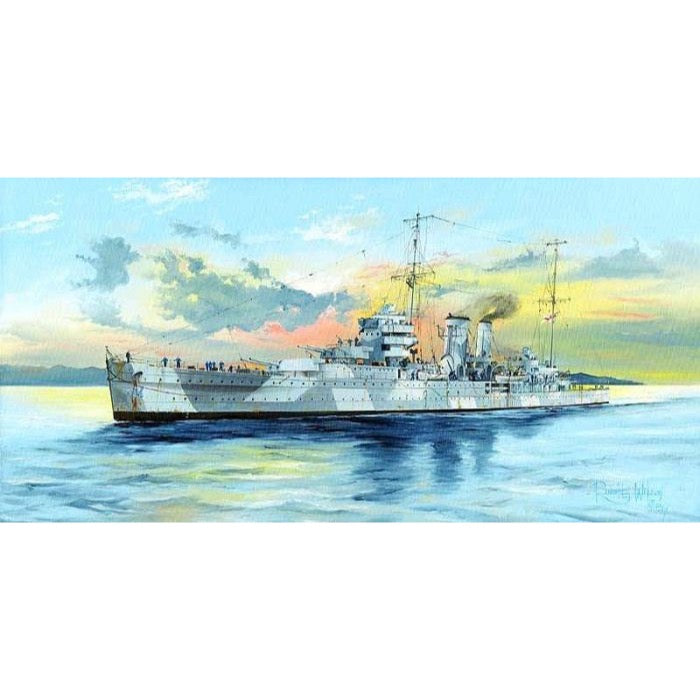
Trumpeter 05351 1/350 HMS York Heavy Cruiser
54.00
$
<h3>HMS York was the lead ship of her class of two heavy cruisers built for the Royal Navy in the late 1920's.</h3>
<p>She mostly served on the America and West Indies Station before World War II. Early in the war the ship escorted convoys in the Atlantic and participated in the Norwegian Campaign in 1940. York was transferred to the Mediterranean theatre in late 1940 where she escorted convoys and the larger ships of the Mediterranean Fleet. She was wrecked in an attack by Italian explosive motorboats of the 10th Flotilla MAS at Suda Bay, Crete, in March 1941. The ship's wreck was salvaged in 1952 and scrapped in Bari.</p>
<p>York's design was based on the earlier County classes but was intended to be smaller and cheaper, although better armoured. She was easily distinguishable from her sister ship, Exeter, as the latter had straight masts and funnels, while those of York were angled to the rear. In addition, York also had a very tall bridge designed to clear the aircraft catapult originally planned to be carried on the superfiring ('B') gun turret forward.</p>
<h3>Features</h3>
<ul>
<li>
<p>The kit contains over 330 parts</p>
</li>
<li>
<p>The hull made from two-directional slide molds</p>
</li>
<li>
<p>Deck wood pattern finely rendered</p>
</li>
<li>
<p>Contains display stand</p>
</li>
<li>
<p>Photo etched parts included</p>
</li>
</ul>
<h3>Specifications</h3>
<ul>
<li>
<p>Model Brief: Length: 500.8mm, Beam: 49.7mm</p>
</li>
<li>
<p>Metal Parts: anchor chain</p>
</li>
<li>
<p>Total Sprues: 17 sprues , hull and decks</p>
</li>
</ul>
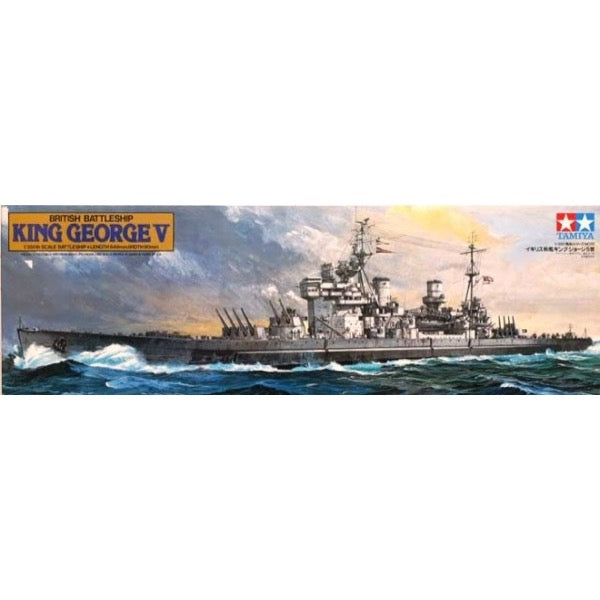
Tamiya 78010 1/350 British King George V Battleship
50.00
$
<h3>A Classic British Battleship</h3>
<p>This kit depicts the HMS King George V, the lead ship of her namesake class of battleships which served the Royal Navy during WWII. Her flat-sided bridge area and distinctive stern shape have been accurately reproduced. Modellers can also enjoy exploring the layout of various superstructure areas such as the navigation and compass decks. Her formidable appearance is completed by her armament of ten 14-inch guns, sixteen 5.25-inch guns, and over 100 anti-aircraft guns. The model comes with a stand and nameplate for a professional display.</p>
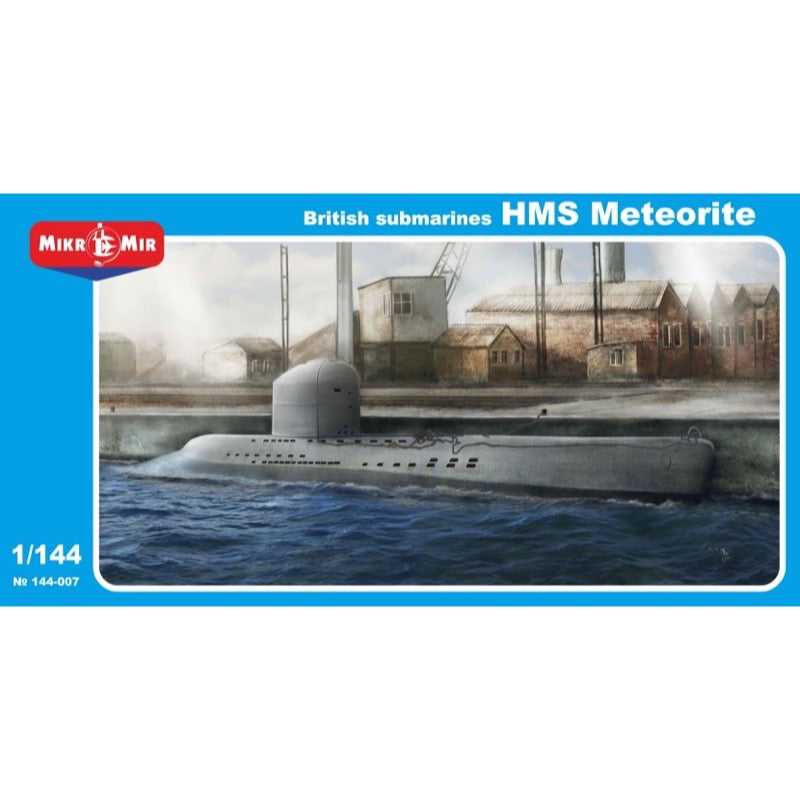
Mikro-Mir 144-007 1/144 HMS Meteorite
27.00
$
<p>The Type XVII U-boats were small coastal submarines which used Hellmuth Walter's high test peroxide propulsion system, which offered a combination of air-independent propulsion and high submerged speeds.</p>
<p>In the early 1930s Hellmuth Walter had designed a small, high-speed submarine with a streamlined form propelled by high test peroxide and in 1939 he was awarded a contract to build an experimental vessel, the 80 ton V-80, which achieved an underwater speed of 28.1 kn (52.0 km/h; 32.3 mph) during trials in 1940. In November 1940 Admirals Erich Raeder and Werner Fuchs (head of the Kriegsmarine?'?s Construction Office) witnessed a demonstration of the V-80; Raeder was impressed, but Fuchs was slow to approve further tests.</p>
<p>Following the success of the V-80's trials, Walter contacted Karl Donitz in January 1942, who enthusiastically embraced the idea and requested that these submarines be developed as quickly as possible. An initial order was placed in summer 1942 for four Type XVIIA development submarines.</p>
<p>Of these, U-792 and U-793, designated Wa 201, were built by Blohm & Voss, commissioned in October 1943, and achieved 20.25 kn (37.50 km/h; 23.30 mph) submerged. The other pair of Type XVIIA submarines, U-794 and U-795, designated Wk 202, were constructed by Germaniawerft and commissioned in April 1944.</p>
<p>The U-793 achieved a submerged speed of 22 kn (41 km/h; 25 mph) in March 1944 with Admiral Donitz aboard. In June 1944 the U-792 achieved 25 kn (46 km/h; 29 mph) over a measured mile.</p>
<p>Construction of operational Type XVII submarines - the Type XVIIB - was begun at the Blohm & Voss yard in Hamburg. The Type XVIIB, unlike the XVIIA, had only a single turbine. The initial order was for 12 submarines, U-1405 through U-1416. However, Blohm & Voss were already struggling to cope with orders for Type XXI submarines and the Kriegsmarine reduced the order to six.</p>
<p>Three Type XVIIB boats were completed by Blohm & Voss of Hamburg between 1943 and 1944: U-1405, U-1406 and U-1407. U-1405 was completed in December 1944, U-1406 in February 1945, and U-1407 in March 1945.</p>
<p>A further three boats (U-1408 to U-1410) were under construction, but were not complete when the war ended. Another six Type XVIIB's (U-1411 to U-1416) were cancelled during the war in favour of the Type XXI.</p>
<p>All three completed Type XVIIB boats were scuttled by their crews at the end of the Second World War, U-1405 at Flensburg, and U-1406 and U-1407 at Cuxhaven, all in the British Zone of Occupation.</p>
<p>U-1407 was salvaged in June 1945, and transported to Barrow-in-Furness, where she was refitted by Vickers with a new and complete set of machinery also captured in Germany, under the supervision of Professor Hellmuth Walter. Because she was intended to be used solely for trials and possibly as a high-speed anti-submarine target, her torpedo tubes were removed.[3] She was commissioned into the Royal Navy on 25 September 1945 and renamed HMS Meteorite.</p>
<p>During 1946 Meteorite carried out a series of trials under the guidance of Walter and his original team from Germaniawerft, Kiel. The trials raised considerable interest in the possibility of HTP as an alternative to nuclear power as air-independent propulsion and the Admiralty placed an order for two larger experimental Walter boats based on the German Type XXVI, HMS Explorer and HMS Excalibur, to be followed by an operational class of 12 boats.</p>


